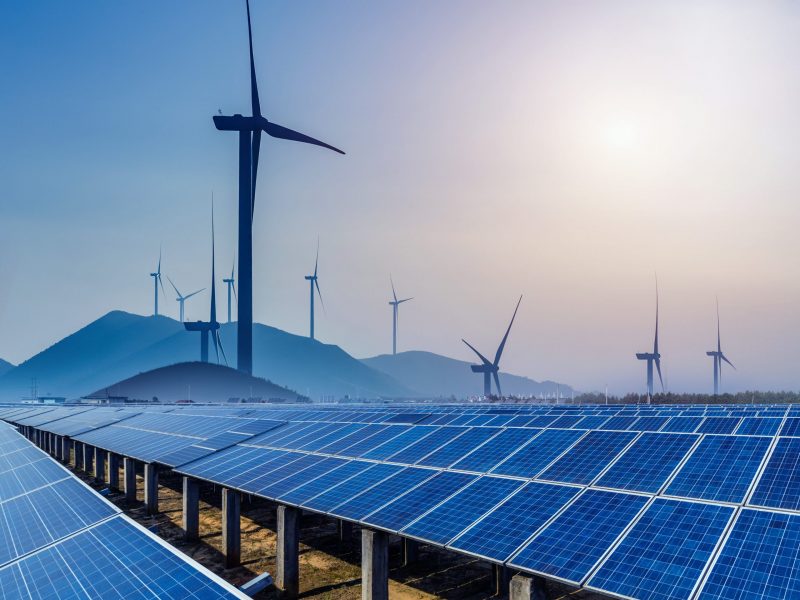
Tech by Android – Breakthroughs in renewable energy technologies for a sustainable future continue to reshape global industries and societies. Solar panels now generate more power using advanced photovoltaic cells. Wind turbines produce energy with improved blade designs and storage integration. Hydropower facilities incorporate eco-friendly systems to protect aquatic life. Researchers explore green hydrogen as a clean alternative fuel. Governments support projects with incentives and policies. Private companies invest heavily in renewable infrastructure to meet rising demands. Communities adopt rooftop solar, microgrids, and battery storage solutions. Education programs raise awareness about clean energy adoption. These combined efforts reduce reliance on fossil fuels significantly. Renewable energy innovations push humanity toward a greener, safer, and more sustainable tomorrow.
“Read More: How the Punk Music Revolution Changed the World”
Solar energy advances through cutting-edge photovoltaic cell innovations. Engineers design perovskite solar cells that absorb more sunlight. Tandem cells combine multiple layers to maximize efficiency. Flexible solar panels enable integration into everyday products like windows and clothing. Manufacturing processes lower production costs for widespread use. Countries expand solar farms to generate massive clean energy. Communities benefit from cheaper electricity bills and reduced carbon footprints. These advancements position solar power as a dominant global energy source.
Wind energy technology improves rapidly with modern turbine designs. Taller towers capture stronger and steadier winds. Lightweight composite blades increase efficiency and reduce maintenance needs. Offshore wind farms harness powerful ocean winds to supply cities. Storage integration ensures consistent energy even when winds fluctuate. Engineers focus on reducing noise and environmental impact. Communities near wind projects gain jobs and sustainable power access. Wind power now drives large-scale renewable growth worldwide.
“Read About: Android Gaming in the Future From AI-Powered Interactive Worlds”
Hydropower evolves with designs that balance efficiency and ecosystem protection. Fish-friendly turbines allow safe passage for aquatic species. Small-scale hydro systems power rural communities without large dams. Floating hydropower technologies reduce land use and environmental disruption. Advanced monitoring ensures sustainable water management practices. Governments modernize aging dams to enhance energy output. Communities near rivers benefit from cleaner energy while protecting biodiversity. Hydropower modernization creates harmony between human needs and natural balance.
Green hydrogen gains recognition as a revolutionary renewable fuel. Produced using electrolysis powered by renewable energy, it emits no greenhouse gases. Hydrogen storage supports industries that cannot fully electrify. Transportation sectors adopt hydrogen-powered vehicles for long-range travel. Factories use hydrogen for clean steel and chemical production. Global projects invest billions into hydrogen infrastructure and pipelines. Governments collaborate internationally to establish trade networks. Green hydrogen promises energy security and carbon reduction simultaneously.
Reliable energy storage supports the growth of renewable power. Lithium-ion batteries now offer higher capacity and faster charging. Solid-state batteries promise safer and longer-lasting performance. Grid-scale storage systems balance supply and demand effectively. Pumped hydro storage provides backup during low generation. AI-powered management systems optimize battery efficiency. Communities benefit from uninterrupted renewable electricity during peak hours. Energy storage ensures renewable power becomes reliable for households and industries worldwide.
Governments worldwide implement strong policies to accelerate renewable adoption. Tax incentives encourage households to install solar panels. Subsidies lower costs for wind and hydropower projects. Regulations mandate utilities to increase renewable percentages in grids. Research funding supports development of next-generation clean technologies. International agreements like the Paris Accord drive global commitments. Communities experience cleaner air and economic growth from renewable jobs. Policy frameworks directly influence the speed of global energy transformation.
Private companies invest heavily in renewable energy infrastructure. Tech giants build massive solar farms to power data centers. Automakers transition factories to run on clean electricity. Financial institutions fund renewable startups and innovation hubs. Large-scale offshore wind projects attract multinational collaboration. Corporations integrate sustainability goals into long-term strategies. These investments create new jobs and expand global energy capacity. Corporate action accelerates renewable adoption faster than government programs alone.
Local communities adopt renewable projects tailored to specific needs. Rooftop solar programs reduce household dependence on grids. Microgrids supply power in remote rural villages. Community-owned wind turbines generate shared revenue. Educational campaigns teach families about renewable practices. Farmers use solar irrigation systems for sustainable agriculture. These grassroots projects empower citizens while reducing environmental impact. Community-led renewable adoption strengthens resilience and local energy independence worldwide.
Education plays a critical role in renewable energy adoption. Schools integrate sustainability lessons into science curricula. Universities conduct groundbreaking research on solar, wind, and hydrogen. Public campaigns highlight benefits of clean power to households. Workshops train workers for green energy careers. Online platforms spread knowledge about eco-friendly practices. Greater awareness drives behavioral change among citizens. Education ensures long-term commitment to building a renewable-powered future globally.
Future renewable breakthroughs promise dramatic shifts in global energy systems. Transparent solar panels may integrate into windows of buildings. Floating offshore wind farms could generate gigawatts near coastal cities. Fusion energy research explores limitless clean power. Hydrogen-powered aviation could transform global transportation. Artificial intelligence will optimize global grids for maximum efficiency. New materials will make solar and batteries more sustainable. These breakthroughs create exciting pathways toward a fully renewable-powered planet.